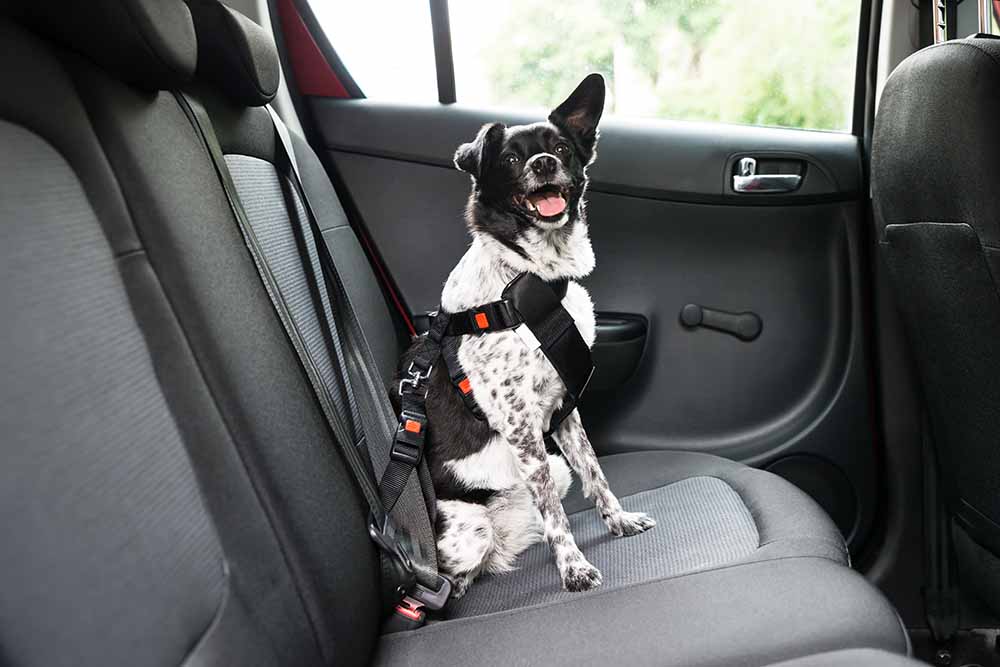
For most of us, putting on a seatbelt when we get in a car, whether in the driver’s seat or as a passenger, is second nature. So why don’t we have a similar impulse for our pets? For some of us, it’s just what we’re used to, and the way it’s always been. It could also be our pets themselves, who love nothing more than sticking their heads out of the window or roaming across the backseats as they please, and would make a fuss if confined to a crate or behind a barrier.
But as attitudes towards pet ownership evolve, restraining pets while in transit is becoming much more common. Your pet might not enjoy the ride quite as much, but most owners would agree that pets deserve the same safety considerations as any other member of the family. Here are a few best practices for ensuring a safe and happy ride for your four-legged friend.
Why buckle up? Essential gear Tips for dog owners Tips for cat owners
Why buckle up?
The advent of the modern three-point seatbelt was one of the biggest advancements in the history of car safety, saving countless lives since its adoption in the 1960s. In the 21st century, the benefits of buckling up behind the wheel are mostly self-explanatory: in the event of a crash, a harness prevents you from flying forward and colliding with the windshield or being thrown from the vehicle altogether. The same is true for your pet, which can be seriously injured in a collision and can also cause injury to other passengers in the vehicle. In the aftermath of a crash, an unrestrained and scared pet may run off, putting itself at further risk of injury. And that’s to say nothing of the distraction free-roaming pets can cause inside a vehicle while driving – a major hazard to yourself and others on the road.
While some US states have laws on the books mandating vehicle safety harnesses for pets, there are currently no such laws in Canada. Depending on the situation, however, drivers transporting an unrestrained pet could be ticketed for distracted driving or driving with an unsecured load.
Essential gear
As more people clue into the importance of road-going pet safety, there are more options than ever on the market. Here are a few of the most popular:
Crates - A hard-sided crate (preferably one with a crash test rating) secured in the cargo area of your vehicle is a popular option for larger dogs. If your vehicle doesn’t have a cargo area, or you have a smaller dog, look for a soft-sided crate that can be latched into place using the seatbelt.
Harnesses - This popular option functions in much the same way as a human seatbelt, and will allow your pet to safely ride on the seat. Better still, many versions can be used as walking harnesses as well, making for seamless transfers to the dog park or trail.
Barriers - Popular for larger dogs and owners who don’t want muddy paws on the upholstery, pet barriers separate the passenger compartment and the cargo area, keeping your passengers safe and your seats clean.
Vehicle-specific options - Some carmakers offer containment safety systems for dogs that are designed to fit into your specific vehicle’s cargo area. While they may be more expensive than other options, they justify the expense by being designed to work with your vehicle.
Tips for dog owners
Depending on your dog, they may not be enthusiastic about being crated in the car, or even wearing a harness, but they’ll eventually get used to it. To help your pup adjust, experts suggest starting with small trips, or even just a drive around the block, followed by lots of positive reinforcement.
Tips for cat owners
Because cats don’t ride in cars as much as dogs, there are far fewer options for safety equipment. There are a few cat-specific harnesses on the market (if, of course, your cat will tolerate wearing one) and some harnesses designed for small dogs will also work for cats. The best option for most cats, however, will be a soft-sided travel crate that latches onto the seatbelt.
Jeremy Freed is a freelance writer and editor based in Toronto. His writing about fashion, travel, food and design appears in Sharp, Harry and re:Porter magazines, among many others.